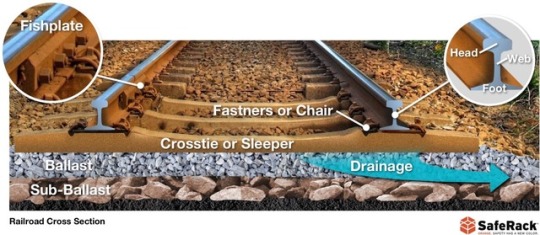#opengraded
Text
Formation en pratique des enquêtes statistiques, économique et sociales
Formation en pratique des enquêtes statistiques, économique et sociales
FORMATION EN PRATIQUE DES ENQUÊTES STATISTIQUES, ÉCONOMIQUE ET SOCIALES AVEC LES LOGICIELS STATISTIQUES EPIDATA POUR LA COLLECTE ET SAISIE DES DONNEES ET SPSS POUR LE TRAITEMENT ET L’ANALYSE DES DONNEES AU CABINET D’ANALYSE STATISTIQUE, ANALYSE D’IMPACT SOCIO ENVIRONNEMENTALE OPENGRAD STAT ECO
POSSIBLE EN COURS DU JOUR ET COURS DU SOIR
DATE : 01 au 13 août 2022
Inscription : 3000 F CFA,
Frais de…

View On WordPress
0 notes
Text


Hybrid base construction for patios and driveways in Ottawa
A lot of changes have happened in the Hardscape industry since I started almost 10 years ago. When I started it was industry standard to use GA for the base and stonedust for the bedding layer, there was nothing else, that’s all the suppliers carried - specifically for Hardscape construction or interlock, So I thought...
I started attending as many classes and hardscape shows I could get to and getting certified was of utmost importance. I always felt there had to be a better way, and it was there all along. The shows and classes had started talking about permeable paver construction even ICPI talked about it and how clearstone doesn’t need compaction, that’s when it struck me, why not use a permeable base with regular pavers?
I am always looking for quicker faster better ways to install, if there’s a product or method out there I want to know all about it.
One of those ways is what is now called a hybrid base which is essentially regular pavers installed over a permeable base.
Through the past 10 years we have shifted from a base constructed of fines (GA and Stonedust) to what we now call a hybrid base and have seen a big shift with many other contractors following suit.
The hybrid base for paver installation is constructed in a way that
* we don’t get freeze/thaw expansion problems that you get using a dense graded base
* You get built-in drainage,
* Efflorescence is minimized
* Easier to install with no worries if your installer compacted properly as it is 95% compacted as is.
One note to mention here is this installation practice has not yet been approved by ICPI. But, it is becoming widely accepted even by ICPI instructors, because it is that effective.
Take a look at railroad tracks for instance, they are built on what is essentially an open graded base, and have been for over 200 years! Even manufacturers of pavers have recommended this method and some have gone as far as voiding their warranty if stonedust was used.
I’ll list some of the pros and cons of using a hybrid open graded base in Ottawa.
Pros
#57 stone gets delivered and installed at 95% compaction before the compactor even gets turned on. So a 10 yard delivery of 57 stone is very close to 10 yards installed. GA on the other hand, 10 yards gets compacted and loses approx 25% to 7-8 yards - ever wondered why your calculations were off and had to go get another 2,3 or 4 yards?This translates to inefficiency and time lost and money out of pocket.
Efflorescence is minimized or even eliminated
57 stone is not affected by frost and heaving because water has space to expand when it does freeze in between all the stones.
Eliminate drains and make an area permeable
Easier to work with in the rain
#9 stone used for the bedding layer doubles as winter grit if you happen to do snow removal services
No worries if your employees compacted GA properly every 2-3 inches to achieve 95% compaction - this is THE number 1 cause of failures down the road.
Cons
Edge restraints are tricky to install but still doable.
#9 stone is only available in very limited locations in Ottawa
Greely sand and gravel - Depot
Karson - quarry
Tomlinson - quarry
Can-Lock
Kott will be carrying it in 2019
ICPI hasn’t technically recognized it yet as an authorized installation method.
I believe it’s coming and they are waiting on test results.
As you can see the Cons are minimal.
At Peartree Property Services we are strictly hybrid base construction, you will not see stonedust on our job sites ever.
We believe in long lasting quality installations and believe this will be the standard in short time.
Are you a Hardscape contractor? Are you using this method?
Are you a homeowner? Are you convinced that this is how you want your next project installed?
Let me know...
#opengraded#permeable#pavers#interlock#hybridbase#57stone#railway#patios#ottawa#landscaping#excavation#retainingwall#unilock#techobloc#prartreepropertyservices
1 note
·
View note
Text
Free Access Why Python Is the Next Wave in Earth Sciences Computing
So, why all the fuss about Python? Perhaps you have heard about Python from a coworker, heard a reference to this programming language in a presentation at a conference, or followed a link from a page on scientific computing, but wonder what extra benefits the Python language provides given the suite of powerful computational tools the Earth sciences already has. This article will make the case that Python is the next wave in Earth sciences computing for one simple reason: Python enables users to do more and better science. We'll look at features of the language and the benefits of those features. This article will describe how these features provide abilities in scientific computing that are currently less likely to be available with existing tools, and highlight the growing support for Python in the Earth sciences as well as events at the upcoming 2013 AMS Annual Meeting that will cover Python in the Earth sciences.
Python is a modern, interpreted, object-oriented, open-source language used in all kinds of software engineering. Though it has been around for two decades, it exploded into use in the atmospheric sciences just a few years ago after the development community converged upon the standard scientific packages (e.g., array handling) needed for atmospheric sciences work. Python is now a robust integration platform for all kinds of atmospheric sciences work, from data analysis to distributed computing, and graphical user interfaces to geographical information systems. Among its salient features, Python has a concise but natural syntax for both arrays and nonarrays, making programs exceedingly clear and easy to read; as the saying goes, “Python is executable pseudocode.” Also, because the language is interpreted, development is much easier; you do not have to spend extra time manipulating a compiler and linker. In addition, the modern data structures and object-oriented nature of the language makes Python code more robust and less brittle. Finally, Python's open-source pedigree, aided by a large user and developer base in industry as well as the sciences, means that your programs can take advantage of the tens of thousands of Python packages that exist. These include visualization, numerical libraries, and interconnection with compiled and other languages, memory caching, Web services, mobile and desktop graphical user interface programming, and others. In many cases, several packages exist in each of the above domain areas. You are not limited to only what one vendor can provide or even what only the scientific community can provide!
A number of other languages have some of Python's features: Fortran 90, for instance, also supports array syntax. Python's unique strengths are the interconnectedness and comprehensiveness of its tool suite and the ease with which one can apply innovations from other communities and disciplines. Consider a typical Earth sciences computing workflow. We want to investigate some phenomena and decide to either analyze data or conduct model experiments. So, we visit a data archive and download the data via a Web request, or we change parameters in the (probably Fortran) source code of a model and run the model. With the dataset or model output file in hand, we write an analysis program, perhaps using IDL or MATLAB, to conduct statistical analyses of the data. Finally, we visualize the data via a line plot or contour plot. In general, we accomplish this workflow using a kludge of tools: shell scripting for Web requests and file management, the Unix tool Make for code and compilation management, compiled languages for modeling, and IDL or MATLAB for data analysis and visualization. Each tool is isolated from every other tool, and communication between tools occurs through files.
In Python, every tool is used in the same interpreted environment. And data flow does not have to occur through files; we can access any variable in any tool at any (logical) time in the workflow. As a result, our workflow becomes much more robust and flexible. Additionally, the breadth of the Python tool set means the most important capabilities we need will very likely be available even if a given vendor changes its priorities. Python users also have much greater ability to access innovations from industries outside of the Earth sciences. This latter advantage will become increasingly more important as we push inexorably into the world of cloud computing, big data, and mobile computing; in the next decade, the Earth sciences cannot afford to ignore these innovations.
To be fair, Python has real disadvantages, including the fact that pure Python code runs much slower than compiled code, there are fewer scientific libraries compared to Fortran, and documentation and support for new science users is relatively sparse. There are tools to overcome the speed penalty, the collection of scientific libraries is growing, and science support resources are becoming more robust; nevertheless, these are real issues. For most Earth science applications, the strengths of Python outweigh the weaknesses.
The Earth sciences community has begun to recognize the unique benefits of Python, and as a result its population of users is growing. Adoption of Python by Earth sciences users is no longer confined to “early adopters.” Institutional support includes groups at Lawrence Livermore National Laboratory's Program for Climate Model Diagnosis and Intercomparison, NCAR's Computer Information Systems Laboratory, and the British Atmospheric Data Centre. Several packages exist that handle file formats used by atmospheric and oceanic sciences users, including netCDF, HDF4, HDF-EOS 2, and GRIB 1 and 2 (e.g., via the netCDF4-Python, UV-CDAT, and PyNIO packages). And Python's utility as a common glue is being leveraged by both open-source and proprietary vendors: Python can be used as a scripting language for applications such as Unidata's Integrated Data Viewer, the NCAR Command Language (via PyNGL), GrADS (via OpenGrADS), and Esri's ArcGIS.
Over the last two years, the AMS has helped support the development of Python in the Earth sciences by sponsoring the Symposiums on Advances in Modeling and Analysis Using Python, as well as short courses on using Python in the atmospheric and oceanic sciences. At the 2013 AMS Annual Meeting in Austin, Texas, we will feature the Third Python Symposium; short courses for beginning, intermediate, and advanced users; and a Town Hall meeting to provide answers to questions nonprogrammers and decision makers may have about how Python can help institutions become more productive.
The computational tools the Earth sciences have traditionally used are powerful and have enabled us to accomplish much. With modern tools, however, we can accomplish more. Python, in particular, can help us do more science and do it better. Python enables better science through enabling clear code: its elegant syntax and broad and robust tool set helps Earth scientists write less buggy code. Python also enables more science by helping us to take advantage of the recent explosion of computing resources by giving us access to an amazing set of software tools: Python gives us new capabilities through its modern, object-oriented structure but also gives us access to the new capabilities being generated daily from industries outside of the sciences. More and more, Earth scientists are becoming aware of Python's ability to help us do better and more science. With this “perfect storm” of a clear and concise language, access to a previously unfathomable range of software tools, and a growing scientific user community, Python is poised to become the next wave in the computational Earth sciences.[Source]-https://journals.ametsoc.org/doi/10.1175/BAMS-D-12-00148.1
Advanced level Python Certification Course with 100% Job Assistance Guarantee Provided. We Have 3 Sessions Per Week And 90 Hours Certified Basic Python Classes In Thane Training Offered By Asterix Solution
0 notes
Text
Hardscape Installations Open Graded vs Traditional Base
The base is the part you don't see, but it is the most important aspect of hardscape installation. Here is why we switched to open graded base installations.
https://contractor.unilock.com/blog/contractors-turning-open-graded-base-installations/
1 note
·
View note
Text
Formation en ligne en gestion des risques et principes de crédits
Formation en ligne en gestion des risques et principes de crédits
CABINET OPENGRAD/StatEco
Etablissement spécialisé dans la formation
certifiante en Economie-Statistique et
en Finance Islamique N°RCCM: RB/PK021 10070
N°IFU : 0202112273386
LANCE LA FORMATION EN LIGNE EN GESTION DES RISQUES ET PRINCIPES DE CREDIT EN PARTENARIAT AVEC LA NEW YORK INSTITUTE OF FINANCE
Familiarisez-vous grâce à cette formation avec la gestion des risques, les principes de crédit et…

View On WordPress
#cabinet OPENGRAD#formation en ligne#formation en ligne en gestion des risques et principes de crédits#gestion des risques et principes de crédits#vedette
0 notes
Text
Formations en ligne en partenariat avec les organismes internationaux
Formations en ligne en partenariat avec les organismes internationaux
CABINET OPENGRAD/StatEco : Etablissement spécialisé dans la formation certifiante et Economie Statistique et en Finance Islamique : N°RCCM: RB/PK021 10070
N°IFU : 0202112273386
LANCE DES FORMATIONS EN LIGNE EN PARTENARIAT AVEC LES ORGANISMES INTERNATIONAUX
– EN PARTENARIAT AVEC L’INSTITUT DU FOND MONETAIRE INTERNATIONAL (FMI) :
1-Programmation et politiques financières :
-Analyse des…

View On WordPress
0 notes